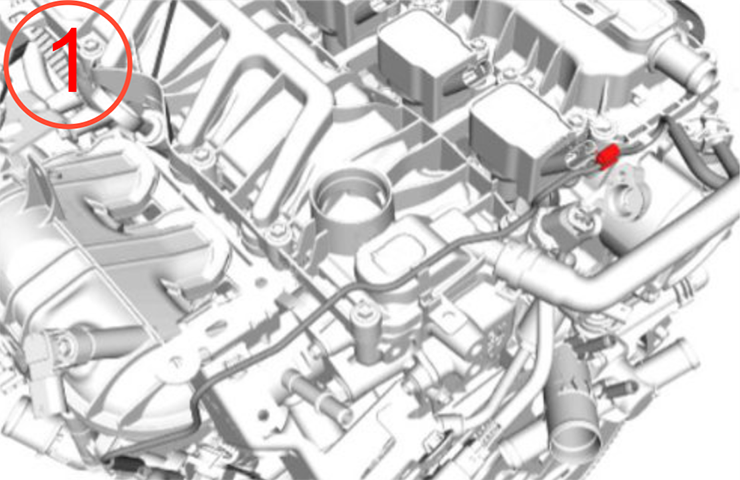Some 2019-2022 Encore GX and Trailblazer models equipped with the 1.2L engine (RPO LIH) may have an illuminated Check Engine MIL with DTC P0299 (Engine Underboost) set. These conditions may be caused by possible turbocharger wastegate linkage wear.
Use the EN-27738-A Vacuum Pump to perform several tests to determine if the turbocharger wastegate is the source of the concern. Refer to #PIP5829 for the complete diagnostic procedure.
Begin diagnosis by connecting the EN-27738-A Vacuum Pump to the turbocharger wastegate solenoid vacuum supply hose. (Fig. 8) With the engine idling, the tool should read −50 kPa (−0.5 bar, 15 in Hg).
 Fig. 8
Fig. 8
If the desired pressure/vacuum cannot be achieved or does not hold steady, test and replace the vacuum pump assembly and related hoses as needed.
If the desired pressure/vacuum can be achieved and holds steady, reconnect the turbocharger wastegate vacuum supply hose. Next, disconnect the turbocharger wastegate solenoid actuator supply hose and connect the EN-23738-A Vacuum Pump to the turbocharger wastegate solenoid valve actuator supply port. (Fig. 9)
 Fig. 9
Fig. 9
With the engine idling, the tool should read Less than −17 kPa (−0.17 bar, 5 in Hg). If the reading is greater, test and replace the Q42 turbocharger wastegate solenoid valve.
If the reading is less than −17 kPa (−0.17 bar, 5 in Hg), hold engine speed at wide open throttle for two seconds and check for a tool reading of greater than −50 kPa (−0.5 bar, 15 in Hg). If the reading is less, test and replace the Q42 turbocharger wastegate solenoid valve. If the tool reading is greater remove the turbocharger and inspect the wastegate linkage for excessive wear or play.
Replace the turbocharger if necessary. Be sure to perform the Intake System Learned Values Reset after installing the turbocharger to reset the airflow adaptive learned values of the induction system. Refer to the Intake System Learning Values Reset procedure in the appropriate Service Information.
– Thanks to Raymond Haglund


















